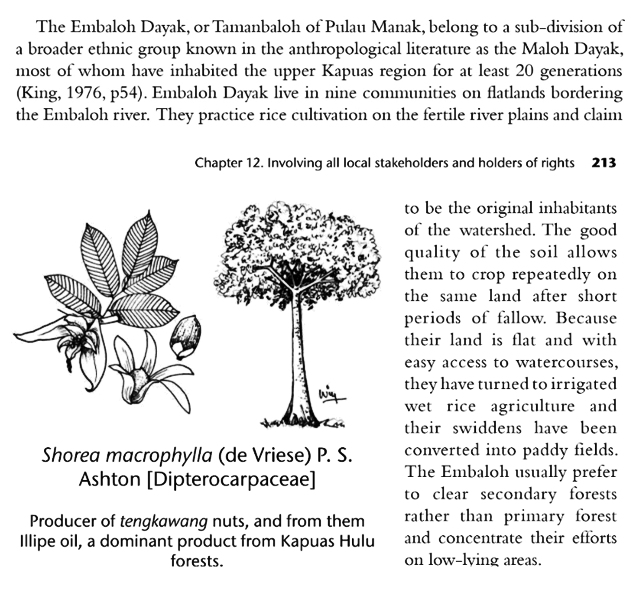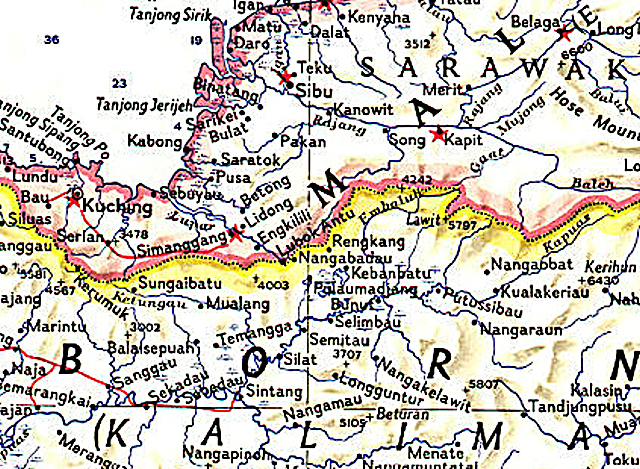ADDITIONAL INFORMATION ON PC 306
|
The Embaloh Dayak are an intriguing small group. Their language, and that of the Taman Dayak is classified as Tamanic, grouped under Buginese (South Sulawesi), and quite different from Iban and other Ibanic languages. Most Embaloh live in the Kapuas Ulu regency in Kalimantan Barat, while some still live in the interior upriver of Embaloh. While there is speculation about relatively recent immigration from elsewhere, the Embaloh maintain that they have lived in the area for centuries. They have assimilated with the Iban of the border area and of Sarawak to a substantial degree, and have learned to speak Iban, but most still speak their very different Tamanic language as well. K. Alexander Adelaar in Borneo as a Cross-Roads for Comparative Austronesian Linguistics: "It is evident that the Tamanic-Buginese link has no connection with the Buginese migrations to the coasts of East, South and West Borneo from at least the 17th century on. The Buginese kept their identity or merged with the local Malays. Their migration to Borneo is a more recent phenomenon in comparison to a Buginese-Tamanic split, which must have preceded the Islamization of South Sulawesi. It must have happened so long ago that it allowed the Tamanic speakers to adapt and assimilate to a considerable degree to their Bornean environment, and to forget their “exo-Bornean” origin." (Adelaar in Conference, Comparative Austronesian Project, 1995, Canberra, p.89-93) As to the original homeland of Tamanic, as a consequence of its apparent membership of the South Sulawesi language group it is most likely that at some point in time its speakers have left South Sulawesi and have migrated to Borneo. Probably the Embolah as a separate population group came into being as the result of Buginese traders, who, preceding even the Chinese in the discovery of Borneo's interior, penetrated far up the rivers, married Dayak women and settled down. According to the Joshua Project website (run by missionaries with a keen interest to learn the languages of the most remote peoples, the better to eradicate their culture), Embaloh society is divided into four classes: Samagat (nobles), mostly the headmen and medical/ritual experts; Pabiring (middle class) who are traders; Banua (commoners); and Pangkam (slaves). Their villages are called banua and may consist of a few rows of longhouses called sau. Tamanic languages are also classified under Buginese by Ethnologue, Gary F. Simons, and Charles D. Fennig, eds., Ethnologue: Languages of the World, Twenty-first edition, 2018. The below quote is from Malcolm Cairns, ed., Shifting Cultivation Policies: Balancing Environmental and Social Sustainability , CABI, 2017. 
Map Sarawak-Kalimantan border area - including Embaloh, Engkilili, Ketungau
|
©Peter ten Hoopen, 2024. The contents of this website are provided for personal, educational, non-commercial use only.
No part of this website may be reproduced in any form without explicit permission of the copyright holder.
